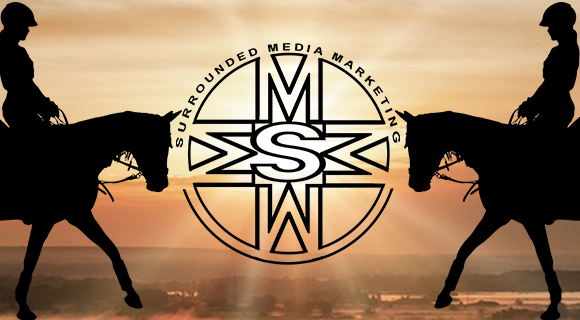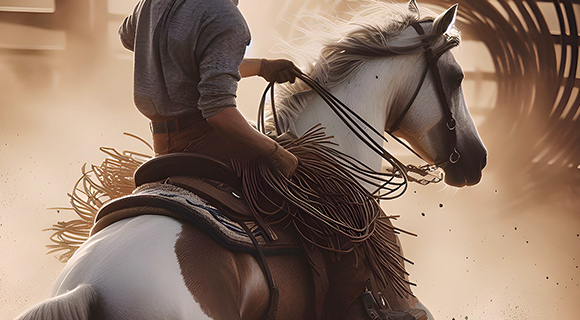Wondering how horse trainers teach their horses to make smooth, responsive turns without confusion or resistance. Many riders struggle with horses that cut corners, overbend, or refuse to obey cues, leading to frustration and uneven performance. Understanding how to effectively guide a horse through turns not only improves safety and control but also strengthens the partnership between horse and rider.

surroundedmedia.com gathered information about how horse trainers teach horses to obey commands, how riders communicate through reins and leg pressure, and how they teach precise, balanced turns. This guide explores the essential training points every rider should understand to build a responsive horse, covering body positioning, rein management, foot cues, and correction techniques that promote harmony in motion.
How Horses Learn Commands
Horses learn through repetition, consistency, and pressure-and-release methods. Trainers first establish basic obedience by teaching horses to respond to pressure from reins and legs. When a horse correctly responds to a cue - such as moving away from leg pressure or following rein guidance - the pressure is released as a reward. This reinforces the connection between the rider’s signals and the desired action.
Horses are highly sensitive animals. They respond to subtle shifts in balance, posture, and energy. A good trainer uses this to communicate without overwhelming or confusing the animal. Clear, consistent signals are key. A horse that trusts its rider’s guidance will perform turns smoothly and confidently, knowing what to expect.
Using Reins and Feet to Direct Movement

In every turn, a rider’s reins and legs work together to guide the horse’s direction, speed, and balance. The reins communicate direction through gentle pressure, while the rider’s legs maintain rhythm and forward movement. Riders should avoid pulling too hard on the reins, which can cause a horse to resist or raise its head.
To cue a turn:
- The inside rein gently asks for direction by guiding the horse’s nose toward the desired path.
- The outside rein controls speed and prevents overbending.
- The inside leg applies light pressure to encourage the horse’s body to bend around it.
- The outside leg supports balance and prevents the horse from drifting outward.
When coordinated correctly, these cues create a seamless motion. The horse follows its rider’s focus, bending smoothly through the turn while maintaining even contact with the ground.
Watch this video to see how horses respond to subtle cues from riders.
Key Training Points for Making Turns
1. Body Alignment
A rider’s body acts as the main guide for the horse. Horses naturally mirror their rider’s balance. When making a turn, the rider should turn their head and shoulders in the direction they want to go. Leaning excessively can unbalance both horse and rider. Instead, stay centered with slight weight distributed to the inside seat bone to help guide the turn.
2. Soft Rein Communication
Horses have sensitive mouths. Heavy-handed rein use can cause discomfort and resistance. Rein cues should feel like a steady suggestion rather than a pull. The key is to use gentle pressure and immediate release when the horse responds correctly. Overuse of reins can lead to stiffness or even behavioral issues such as head tossing.
3. Proper Leg Placement
Legs are vital tools in steering and supporting the turn. The inside leg maintains impulsion and signals the horse to bend, while the outside leg keeps the horse from falling outward. Riders should keep their heels down and legs relaxed, applying pressure only when necessary.
Watch this short video for a more thorough explanation of how to use your legs to cue a horse to turn.
4. Maintaining A Rhythm
Rhythm ensures that a horse moves evenly through a turn. Riders should maintain a steady gait, whether at a walk, trot, or canter, to maintain balance. A disrupted rhythm—like slowing too much or rushing—can cause the horse to lose coordination or misinterpret cues.
5. Visual Focus
Horses often follow the rider’s gaze. Looking toward the desired direction gives clear guidance. Looking down or away can mislead the horse, resulting in sloppy turns or loss of alignment.
6. Practice at Different Gaits
Horses must learn to turn consistently across all gaits. Start at a walk to refine control, then progress to a trot and finally a canter. This creates muscle memory and strengthens coordination between horse and rider.
7. Consistency and Patience
Horses thrive on repetition. Riders should stay calm and consistent with cues. Over-correcting or showing frustration can confuse the horse. Progress may seem slow at first, but patience ensures a lasting foundation.
Watch this video to see how to correct a horse that refuses turn commands.
When to Call a Professional Trainer or Riding Instructor
If a horse consistently ignores cues, resists turns, or exhibits fear or aggression, it’s best to seek professional guidance. An experienced trainer can assess whether the issue lies in the rider’s technique, saddle fit, or the horse’s physical health. Trainers can also identify subtle behavioral or pain-related problems that riders may overlook.
Consistent lessons under professional supervision help riders refine their body control and timing, which are essential for effective turns. A qualified instructor ensures horse and rider safety (building confidence and precision).
Why Call Surrounded Media for Equestrian Videography
For riders and trainers looking to capture their progress or showcase training sessions, Surrounded Media specializes in equestrian videography that highlights the beauty, athleticism, and precision of horse training. The company’s experience filming Western, English, and training disciplines helps them anticipate key moments (such as turns, transitions, and lead changes) and produce cinematic footage that captures the artistry of riding.
Key Considerations for Horse Training

Successful horse training relies on understanding, communication, and trust. Before teaching a horse to make turns, riders must establish groundwork that reinforces respect and attentiveness. This begins with groundwork exercises that teach the horse to move away from pressure, yield its hindquarters, and follow cues calmly.
- Equipment also matters. An improperly fitted saddle or bit can hinder progress and cause discomfort. Riders should ensure that all tack fits correctly and doesn’t create pain points that might lead to resistance. Horses must also be in good health—muscle stiffness, dental issues, or hoof imbalance can cause uneven movement and poor turning performance.
- Patience plays a crucial role. Training sessions should be short and positive, allowing the horse to end on a successful note. Rewarding improvements encourages the horse to stay engaged and motivated.
- Environmental factors also affect training success. Horses trained in calm, distraction-free environments tend to learn faster. Gradually introducing more challenging environments helps them build confidence and focus.
- Finally, consistency in handling is essential. Horses remember routines and cues when trained by riders who maintain the same approach and body language. Inconsistent cues or corrections confuse horses, causing hesitation or anxiety during turns.
By prioritizing these key considerations, riders can build a horse that not only responds to cues but moves gracefully, confidently, and willingly through every turn.
Horse Training Tips
In this article, you discovered how horses learn to respond to rein and leg cues, the importance of balance and consistency in making turns, and how to communicate effectively for smoother, safer riding experiences.
By mastering these techniques, riders can achieve greater control, improve their horse’s responsiveness, and enjoy a deeper bond based on mutual understanding. The result is a harmonious partnership where turns become effortless, fluid, and enjoyable for both rider and horse.
Neglecting proper training and communication can lead to confusion, unsafe riding conditions, and long-term behavioral issues. Without these foundational skills, horses may resist turns or develop imbalances that reduce performance and trust.
Sources:
extension.okstate.edu/fact-sheets/training-horses-safely.html
extadmin.ifas.ufl.edu/media/extadminifasufledu/cflag/image/docs/fl-equine-institute/2002/UnderstandingBasicHorseTraining.pdf
Video Credit:
Carmella Abel - Equine Helper
Horse Training 101
Horse Perfect
